► We revisit the Honda S2000
► Last edition with revised suspension
► Still a spikey performance hero?
Some call it character, others charm. Those little imperfections that give a machine a soul. Like all greats the Honda S2000 isn’t perfect. In fact, it’s not overstating things to say that the early cars were pretty hairy. They felt edgy with a chassis that darted the car across the road to every twitch of the driver’s shoulders. Match that to power delivery more akin to a motorbike than a car and, it was a recipe for ditch-finding, especially in damp conditions.
If you knew what you were doing, then the S2000 was hugely rewarding but it was always a hard car to master; it would often teach an unwelcome lesson the first time you approached the redline with anything other than dead-ahead dialled into the steering.
But is a spikey performance and nervous chassis really how we should label the S2000? We flew out to Spain to test the last limited Edition 100 car, built in 2009 and featuring revised suspension, to see if the S2000 recipe finally came good.
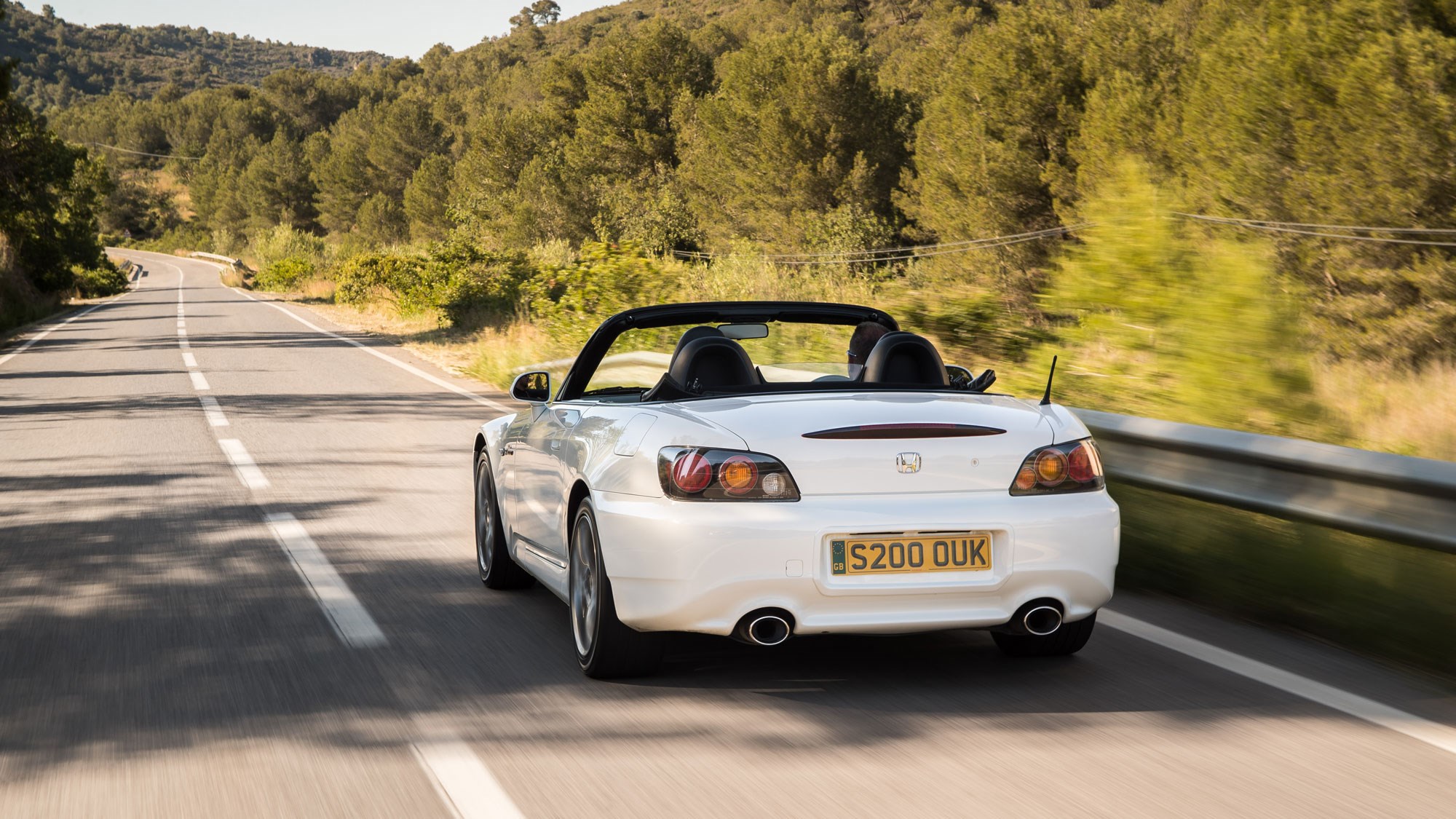
What was so different about the S2000?
Back in 1999, if you wanted a back-to-basics roadster that was quick, handsome and had a stiff chassis with 50/50 weight distribution, you didn’t have too many options. The MX-5 wasn’t far off, but you could hardly call that quick – and the MGF was little better.
Before the S2000, roadsters generally came with scuttle shake – that awful vibration of the windscreen and dash when you hit a bump – and Honda’s motorsport engineers, who were tasked with making the S2000, were determined to eliminate this. Their solution? The high X-bone frame. This steel monocoque chassis and body structure gave the S2000 levels of rigidity previously unheard of in open-top cars.
The greasy bits
The S2000’s engine also set the Honda apart from the rest. It produces 237bhp from a 2.0-litre block – impressive enough today, let alone back in 2009 – and it did so without forced induction, too. What’s more, the S2000 also revs to 9000rpm and that four-pot is placed so far back in the engine bay, it technically made the Honda a front/mid-engine sports car.
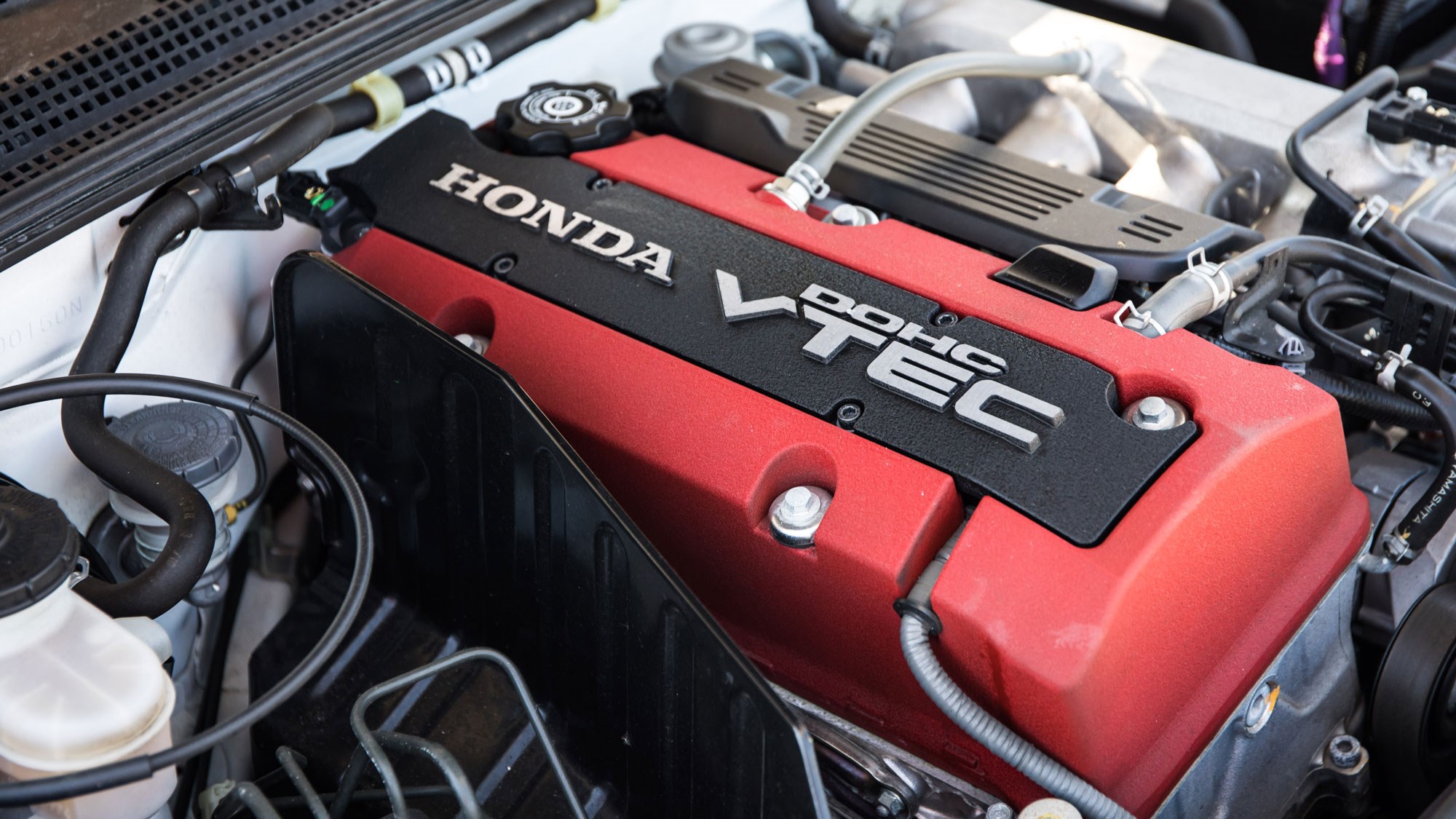
The sweet spot is unquestionably in the 7000-8500 range, and the gorgeous six-speed box makes keeping the engine revved up an easy task, snicking around the gate with an easy, metallic charm. Basically, there hadn’t been a roadster with this level of focus on the driver since the Lotus Elise.
And what about inside?
The seating position is the first clue that this car takes its sporting credentials rather seriously. You’re sat on the floor with your legs stretched out in front, like a 1950s Le Mans racer. The first thing you notice staring you in the face is the huge digital rev counter. This is the next clue to the nature of this machine; all other dials are secondary.
The alloy gearknob is perfectly placed under your left palm on top of the high central transmission tunnel, which juts into the cabin and limits space for larger drivers. It’s so intrusive because it sprouts from the gearbox directly under the lever – it’s why the shift feels so direct. There’s a lot of black plastic but the overall feeling inside the cabin is one of quality without superfluous addenda. The red seats and carpet, which had become something of a fast Honda trademark by the late 1990s, heighten the sense of occasion.
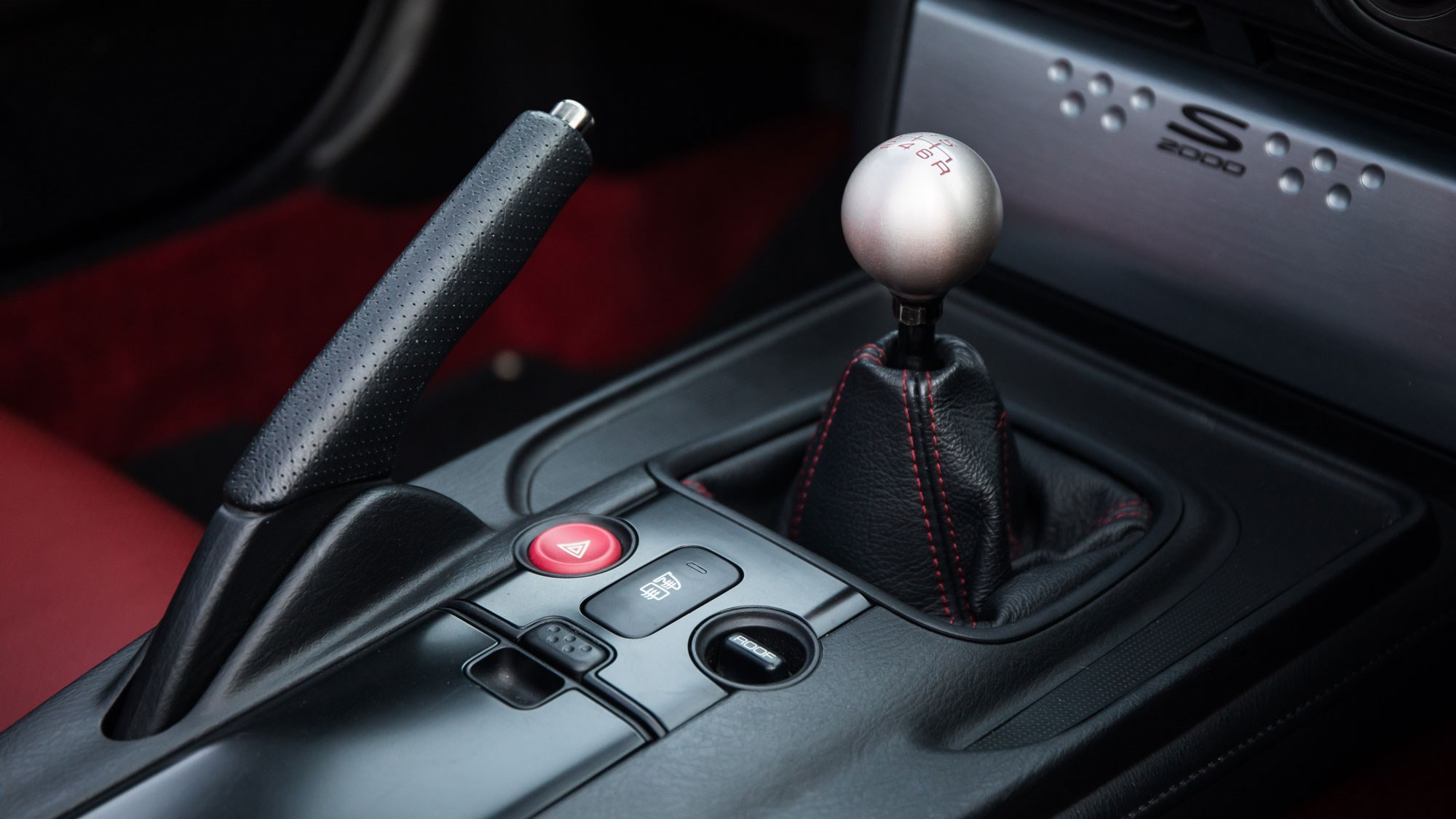
And can you go some in an S2000?
As we stare at a winding ribbon of tarmac stretching down into a baked Basque valley we certainly hope so. There’s plenty here to test the S2000 and if it’s going to impress anywhere it’s got to do it here. The engine, which sounded a little rough at idle, quickly swings up the rev range, but you have to remain in lower gears for a lot longer than feels natural. When most motors are running out of steam the S2000’s is just about to hit its stride. You soon learn that treating this car with kid gloves doesn’t get the best out of it, you have to thrash it.
The six-speed manual is an absolute joy to use up here in these fast sweeping turns. Quick and precise, you can match downshifts with a bit of heel-and-toe without breaking your rhythm. Back on the gas and extend each and every ratio, ringing out every last rev and marvelling all the while at the phenomenal engine sat under that aluminium bonnet.
The motor does sound coarse around the edges, but at higher rpm a deep roar corresponds with the extra shove from the VTEC, as the cam profile hits its rpm threshold. Once you’re up in this zone you’re really making progress but we can see why some never got the most out of the motor, you really have to ring it out to get the best from it.
How’s the handling?
With just over 1200kgs to haul around, and most of this centred under the driver’s seat, the S2000 feels nimble. A mid-life revision to the suspension that was designed to smooth out the transition to oversteer was successful as this S2000 feels a lot more forgiving and neutral than earlier cars we’ve driven. Flicking between fast corners no longer feels like threading a needle, instead of keeping you on edge, the handling inspires confidence. The brakes are superb, which again adds to the car’s sense of composure.
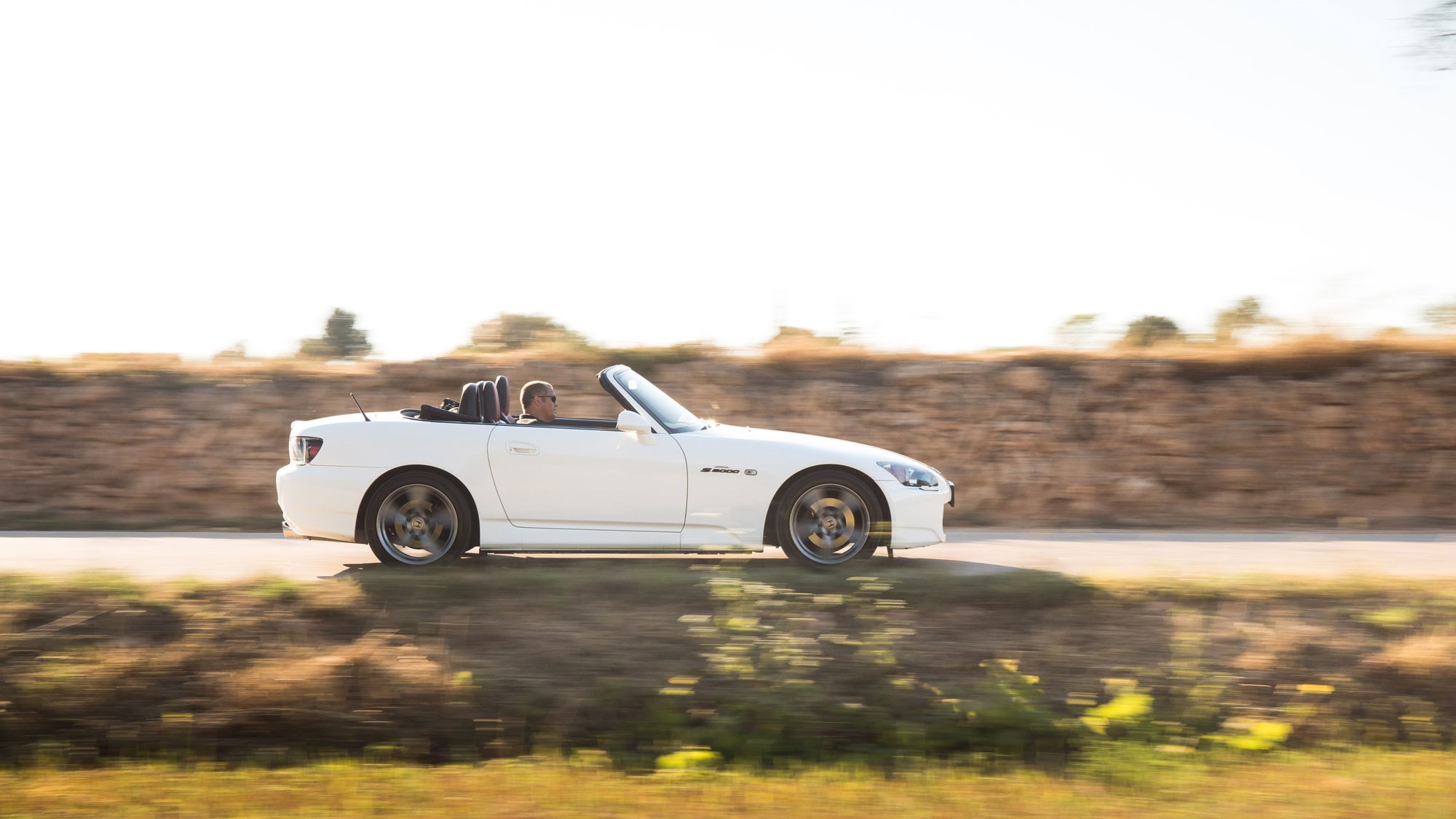
Rolling into a corner you can really feel the chassis doing its thing. The weight transfer is subtle and progressive, telling you at all times where and when you can push that little bit harder. The steering isn’t the most communicative we’ve used however, but it’s still far better than a lot of modern electric systems. However, when you’re nibbling at the edges of grip the front tyres squealing give you more of a clue than any sensation through the wheel.
Thankfully the suspension revision didn’t dull the S2000 experience, if anything it made it much better. In the Edition 100 you can really attack the corners and push much harder without that nervous nature of the early cars getting in the way. Hammering the gas early in a corner, and in a lower ratio, still provokes oversteer but it’s so much more manageable now. We weren’t sure that this late S2000 would feel significantly different but we’re glad to say that it does. Having said that, we’d still advise taking care in the wet.
Verdict: Honda S2000
We weren’t convinced that this late Edition 100 would cure much of the S2000’s shortfalls but it largely does. That suspension revision makes the car more predictable and less twitchy which gives you the confidence to make the most of this Honda’s remarkable ingredients.
If you’re a fan of mid-range torque rather than top-end performance you’re simply not going to get on with the S2000. However, if you love the analogue purity of a naturally aspirated engine matched to a proper manual gearbox, then there’s a lot to like here.
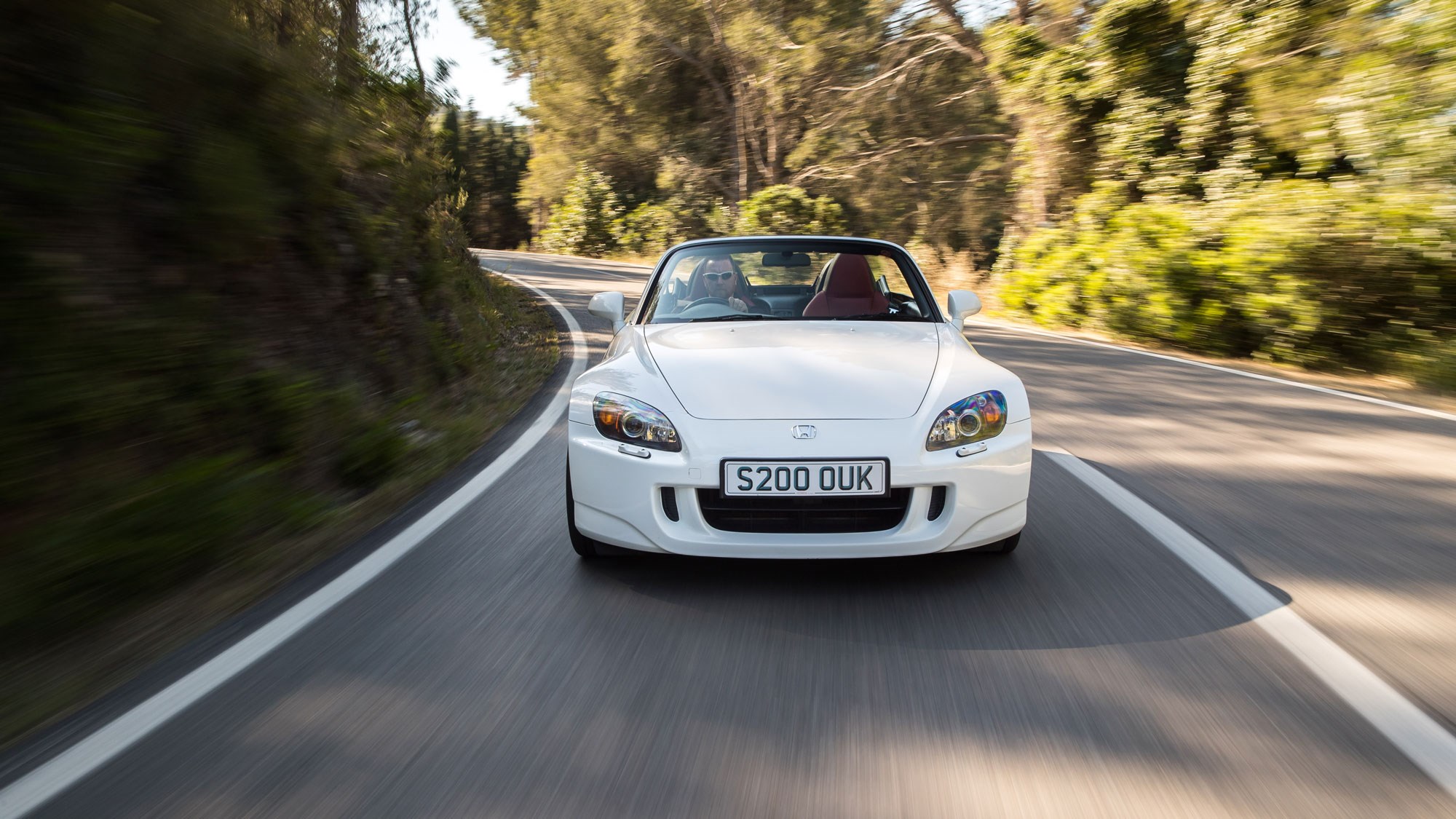
The good news is that even if you don’t like thrashing an engine to within an inch of valve lift, the S2000 is happy to sit back and cruise. The VTEC is a lot like a turbocharged unit outside of its boost range. It will happily cruise all day long without the driver having the slightest idea of the latent power that awaits above 7000rpm.
That will either reassure or frustrate you and we can understand. The Porsche Boxster provides its power in a much more attainable manner, but really if you’re after old-school thrills matched to perfect engineering, there’s little at the price that gets close to an S2000.
Read more Honda reviews by CAR magazine